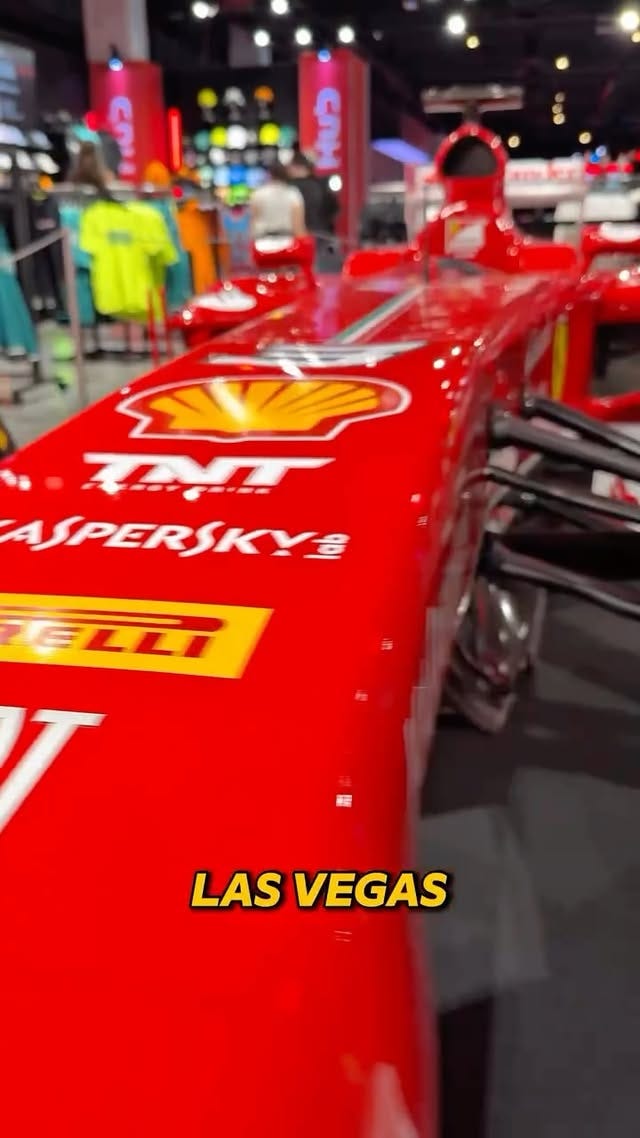Why Liberty Media Is Betting on Culture, Not Ratings
A look at the $300M narrative play that could rewrite how sports rights are sold in the streaming era
You are receiving this email because you subscribed to Business of Speed, the newsletter for those wanting to stay ahead on what’s happening behind the scenes. I’m Vincenzo Landino, a business, tech, and F1 commentator. I’ve spent the last ten years at the intersection of content, partnerships, and the business of motorsport. This newsletter is where I break down what’s working, what’s shifting, and what’s next, without the PR gloss. Thank you for being here.
What’s Happening This Week
It’s Silverstone week, and that means a lot is happening. Here are the key points you need to know.
Harrison Ford reveals Glenmorangie as the Official Whisky of Formula 1
Keanu Reeves is producing and hosting a new Cadillac F1 documentary
UK Prime Minister hosts F1 at 10 Downing Street
Could Silverstone get a ‘forever’ future?
McLaren to run chrome livery for British GP
Racing Bulls unveil Slawn collab for Silverstone
How Apple's F1 Movie Creates a Perfect Storm for US Media Rights Negotiations
The checkered flag has dropped on Brad Pitt's F1 movie opening weekend, and the results are as impressive as a pole position lap at Monaco. With a $144 million global box office debut, the film has become both Brad Pitt's biggest career opening and Apple's most successful theatrical release to date.
However, for those of us who follow the business of speed, the real story isn't happening in movie theaters; it's unfolding in corporate boardrooms, where Liberty Media is leveraging Hollywood glamour to drive Formula 1's most critical media rights negotiations.
The movie's success couldn't have come at a more opportune moment. Liberty Media is actively seeking $150-180 million annually for new U.S. broadcasting rights, nearly double the current value of ESPN's deal, which is approximately $90 million per year. When ESPN declined to renew during their exclusive negotiating window, it opened the door for discussions with NBC, Netflix, and other potential partners.
This is where Hollywood meets Wall Street in the most fascinating way. The F1 movie provides Liberty with a powerful narrative weapon: proof of American market penetration and cultural relevance precisely when they need to justify premium pricing to skeptical broadcasters.
The Ratings Reality Check
But here's where the business math gets tricky.
While the cultural buzz is undeniable, the television numbers paint a different picture. Miami's 2025 Grand Prix on ABC drew 2.17 million viewers, a 29% decrease from the previous year's 3.07 million. The broader context is even more revealing: F1 averages just 1.1 million viewers per race, while NASCAR commands 2.9 million, exposing the sport's limitations on American TV.
The disparity becomes glaring when you examine head-to-head competition. NASCAR's Texas race on FS1—a cable network with 30 million fewer households than ABC—still pulled 2.56 million viewers, beating F1's marquee Miami event.
A potential streaming migration adds another layer of complexity. Apple reportedly sits among the digital players eyeing F1 rights, but streaming paywalls have historically shrunk audiences rather than expanded them. MLS's massive $2.5 billion Apple TV partnership offers a sobering precedent—even with unlimited financial resources, viewership growth can't be manufactured when fans face a $99.99 seasonal paywall.
This creates a fascinating contradiction: Brad Pitt's F1 success proves American hunger for the sport's storytelling exists, yet conventional broadcast metrics reveal the challenges of converting cultural interest into sustained television engagement.
A Strategic Masterclass
What we're witnessing is a masterclass in strategic communications timing. Liberty Media has successfully created a narrative of American market penetration—now backed by real Hollywood success—at precisely the moment when they need to justify premium pricing to broadcasters. The movie's cultural impact becomes a negotiating asset, regardless of whether it translates to sustained television viewership.
This approach represents a broader shift in how sports properties position themselves in media rights negotiations. Rather than relying solely on traditional metrics like TV ratings and demographics, they're leveraging cultural relevance, social media engagement, and cross-platform content success as valuation drivers.
The next few months will reveal whether this move can work. Liberty has until December 2025 to finalize a new U.S. rights deal, providing ample time for the movie's cultural impact to either translate into television audiences or fade into obscurity on streaming services.
For those of us tracking the business of speed, this represents a test case for how modern sports properties can leverage entertainment partnerships to drive media valuations in an increasingly fragmented attention economy.
Will Hollywood prove enough to cross the finish line at Liberty's asking price? The answer will reshape how we think about sports media valuations for years to come.
If you're tracking the business of motorsport, this is the moment to stay sharp. The politics are intensifying, the money is flowing, and the stakes are higher than ever.
Field Notes
This past weekend, I attended a screening of the F1 Movie with IWC and then jumped on a plane to Las Vegas after being invited to check out the Grand Prix Plaza. More on the experience in Saturday’s letter.








